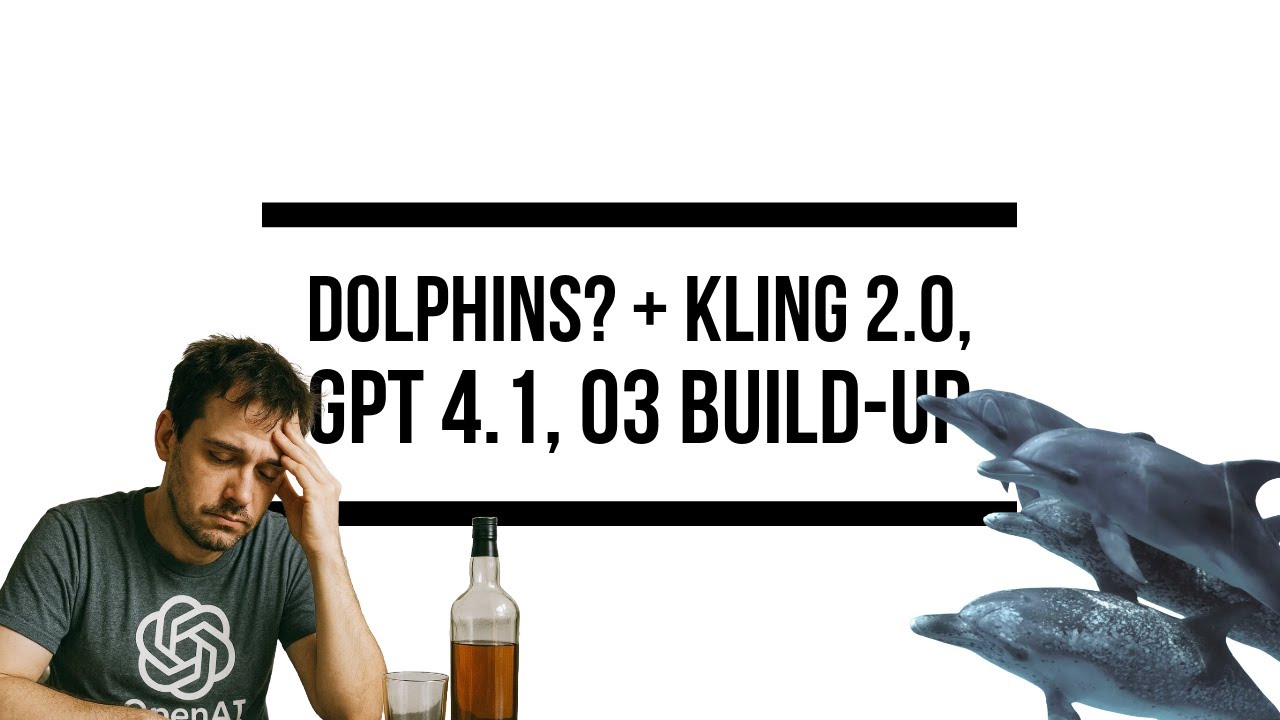The video analyzes recent advancements in AI, including the release of GPT-4.1 and Cling 2.0, while highlighting the competitive landscape between OpenAI and Google, particularly with the performance of models like Gemini 2.5 Pro. It also discusses the importance of data quality in AI development and the promising yet early-stage research of Google’s Dolphin Gemma project aimed at decoding dolphin communication.
The video discusses recent advancements in artificial intelligence (AI), focusing on several key updates, including the release of GPT-4.1, the introduction of Cling 2.0, and Google’s Dolphin Gemma project. The host emphasizes that while progress in AI may seem incremental on a day-to-day basis, a broader perspective reveals significant developments over weeks and months. Cling 2.0 is highlighted as a state-of-the-art tool for generating realistic images, showcasing its capabilities compared to previous versions and other models like Sora. The host also notes the limitations of these models, particularly in terms of physics accuracy.
The release of GPT-4.1 is discussed, which can process up to a million tokens but is not seen as a substantial improvement over its predecessors. The host questions the rationale behind releasing a non-reasoning model like GPT-4.1 when reasoning models like GPT-4.5 are available, suggesting that OpenAI may be responding to market demand and competition from Google’s Gemini 2.5 Pro. The video compares the performance of various models on benchmarks, revealing that Gemini 2.5 Pro outperforms GPT-4.1 in several areas, including coding tasks and long-context understanding.
The upcoming OpenAI model, referred to as O3, is anticipated to excel in scientific reasoning and connecting concepts across different fields. However, the host expresses skepticism about the model’s ability to truly understand real-world applications, citing past failures of AI models in practical tasks. Incremental improvements in AI are acknowledged, with some models showing progress in physical reasoning, but the host cautions against overestimating their capabilities.
The video also touches on the concept of data constraints in AI development, suggesting that the future of AI will rely more on the quality and specificity of data rather than sheer computational power. The host highlights the importance of tailoring models to specific industries and use cases, which can enhance their performance. OpenAI’s efforts to collaborate with various organizations to gather domain-specific data are mentioned as a strategy to improve model efficiency and effectiveness.
Finally, the video discusses Google’s Dolphin Gemma project, which aims to decode dolphin communication. While the research is promising, the host urges viewers to temper their expectations, as the project is still in its early stages and does not yet confirm the existence of a coherent dolphin language. The video concludes by reflecting on the competitive landscape of AI, particularly the advantages Google holds in data sourcing, and hints at the ongoing rivalry between major players in the field, including OpenAI and Google.
